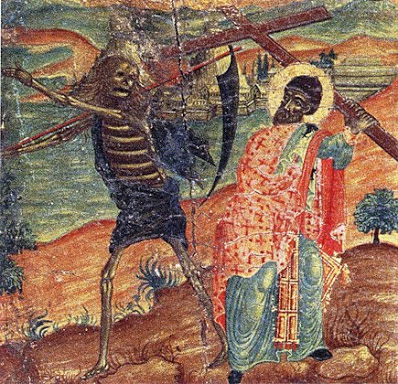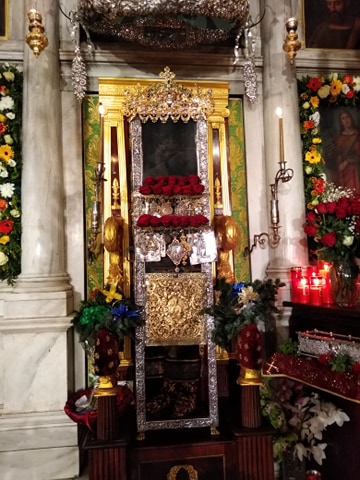Around 1629-30 A.D. a new ordeal befell the blessed island of Corfu. It was a
contagious and deadly disease, which, this time struck without discernment or
mercy. It was the plague. Men and women, young and old, rich and poor – all
struck down by this accursed sickness, with people dying both in the city as
well as the countryside, in the villages. With the onset of the first cases, the
island’s administration hastened to vote on dedicating an immense amount towards
confining the spreading of the disease.
But it was in vain. Very soon, Corfu was going to become desolate. The
stores – both in the city as well as the other major centres were closed. The
local market was dead. Roads were
empty. Only a few horse-drawn carts moved about every now and then, loaded with
corpses - a macabre load that was taken outside the city to be buried in mass
graves. The entire island was a tragic sight.
One day during this world-changing misfortune - and despite the
recommendations by the doctors to remain in isolation and avoid crowding – the
faithful and disease-torn population daringly hastened and overcrowded the
Saint’s holy temple, and, with their heartfelt contrition and scalding hot
tears, begged for his intercession. And salvation was not delayed; it arrived
swiftly and bounteously.
A historian of Corfu, Andreas Marmoras who was alive at the time, told us
how that fearsome epidemic – despite any availability of necessary medicines -
was soon confined to a minimum, and that by Palm Sunday, it had ceased
altogether. During all the nights that the city was being tormented by the
disease, something like the glow of a supernatural lamp could be seen above the
Saint’s church. It was a sign that the Saint was vigilant and guarding his
people. That was how all the faithful explained the phenomenon. That glow was
visible constantly, also by the night guards atop the nearby fortresses.
This fearsome epidemic – the plague – appeared for a second time in Corfu,
after about forty years, in 1673 A.D..
The disease again spread quickly to the towns and villages.
The cases were innumerable. The grim reaper’s scythe was again harvesting
a large number of inhabitants on a daily basis.
Heeding the supplications of his people, the miracle-working Saint hastened
once again to bring the contrition and the tears of both the faithful people -
as well as his own - up to the throne of divine Majesty to beseech for mercy and
salvation. The words of God’s Spirit “Call upon Me in a day of trouble, and I
shall deliver you, and you shall glorify Me” (Ps.50:15) found them fully
implemented in this instance. To the supplications of the divine hierarch and
the repentant people, the response was not late in coming.
The cases receded to a minimum day by day, and by the end of October,
they ended abruptly. And once again,
for three consecutive nights the faithful could see above the belfry a steady
glowing light, and, hovering in that supernatural light, the form of the
wonder-working Saint with a Crucifix in his hand, fending off a pitch black
spectre – the plague - that was striving to avoid the Saint and save itself.

The gratitude and the thanks of the faithful population were once again
immeasurable. Since then, by a decree of the Venetian administration, every
first Sunday of November was set for the celebratory litany of the Saint’s
sacred relics by all the populace, so that the people – and especially the
younger generations - will remember their true and ever-vigilant guardian and
saviour.

Reliquary hosting the holy remains
of Saint Spyridon in Corfu
|
